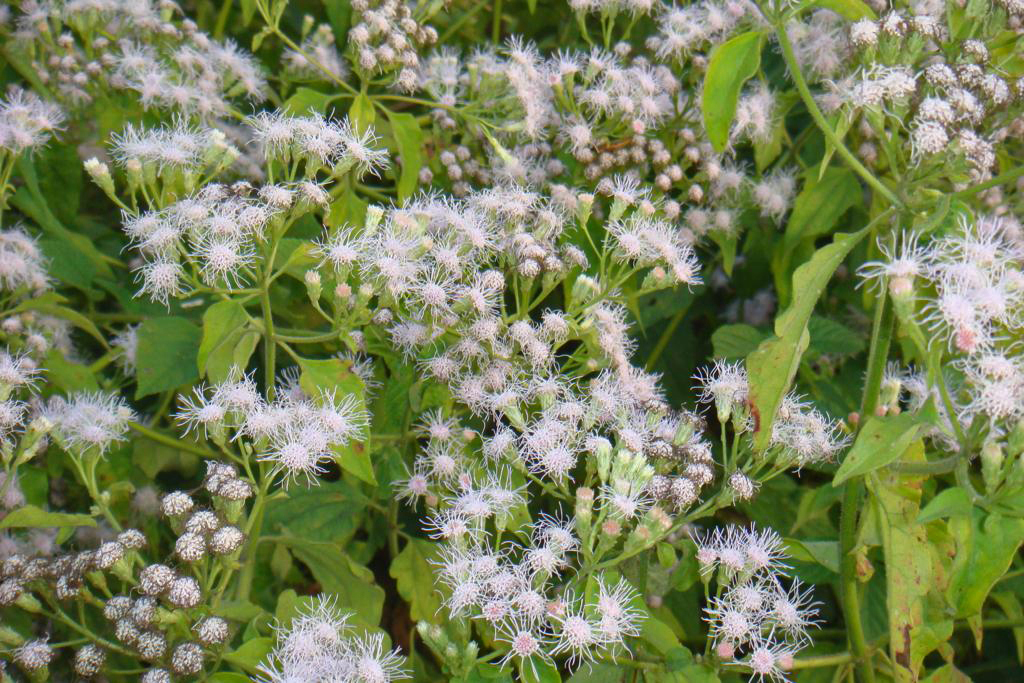- According to a survey, 44 exotic invasive plant species were recorded in five protected forests in Bangladesh. Of them, seven species were found to be harmful, with significant environmental impacts on protected forest areas.
- As a signatory of the Convention on Biological Diversity (CBD), the country is committed to protecting ecosystems and biodiversity of flora and fauna.
- To check the number and reduce the negative impacts of the identified alien invasive plant species on ecology and environment, the government has taken five strategic management plans.
The International Union for the Conservation of Nature (IUCN) recorded 44 exotic plant species in five protected areas (PAs) in Bangladesh. Among them, seven species have significant harmful environmental impacts on these protected forests.
The findings came from a study on protected area-based invasive alien species (IAS), which is the first of its kind in the country.
In the 1980s, two foreign plant species — eucalyptus and earleaf acacia (Acacia auriculiformis), commonly known as akhashmoni, were widely planted in rural Bangladesh for fast-growing timber and a chance to earn quick money.
The planting took place by both residents and the government, mostly in the northern part of Bangladesh to expand forest coverage. Later, the Forest Department of Bangladesh included these two alien species in its social forestry scheme, aimed at reforestation of areas of forest coverage is depleted.
Besides these two species, which have largely spread across the country, some foreign ornamental plants available in the market also pose a serious threat to the environment, humans and animals.
The identified species are Assam lata (Chromolaena odorata), tofani lata (Mikania scandens), sorminda gach (Mimosa pudica L), sungrass (Imperata cylindrica L.), kansh (Saccharum spontaneum L.), water hyacinth (Eichhornia crassipes) and nakphul (Lantana camara L.).

According to the study, the five protected areas where the species were found were: Himchari National Park, Kaptai National Park, Madhupur National Park, Rema-Kalenga Wildlife Sanctuary and the Sundarbans East Wildlife Sanctuary.
In Bangladesh, information about alien species and their impacts on the ecosystem and native species is scarce. More than 300 exotic species are listed as either wildly growing or cultivated as an economic crop in Bangladesh.
However, many people plant those species around their houses as ornamental without knowing their harmfulness. One of these plants is yellow dot (Sphagneticola trilobata). This little, yellow-colored flower and its leaves are poisonous to children and animals, said Gazi Mosharof Hossain, a botany professor at Jahangirnagar University.
The study on IAS was conducted to address article 8(h) of the Convention on Biological Diversity (CBD) and target 15.8 of the U.N. Sustainable Development Goals, both of which pertain to limiting the introduction and spread of invasive species.
The Forest Department, Bangladesh National Herbarium (BNH), and IUCN Bangladesh jointly surveyed the five selected PAs.
Raquibul Amin, country representative of IUCN Bangladesh, said, “The findings are based on the survey conducted in only five protected forests. But it does not mean [invasive alien species] do not exist in other areas of the country. We recorded 44 species; among them, seven are harmful, ranging from mild to major.”
Removing these harmful alien plants requires appropriate scientific technology so they never return to the ecology of the areas, he added.


Why are they harmful?
An estimated 5,000 plants with seeds (phanerogamous plants) grow in Bangladesh, about 500 of which are regarded as medicinal plants with therapeutic properties.
About 10% of these medicinal plants (about 500) are also classified as poisonous, as they produce toxic effects on the animal system if not used carefully or in regulated amounts.
According to the national herbarium, IAS are plants, animals, pathogens and other organisms that are nonnative to an ecosystem and may cause economic or environmental harm or adversely affect human health.
“Native plant species cannot grow properly beneath these foreign plants, as they prevent native plants from absorbing required nutrients from the Earth,” said Gazi Mosharof Hossain.
“Alien plants like Akashmoni dry up groundwater levels more than native species and cannot provide habitat for birds and animals, and they cannot protect native biodiversity from natural disasters like cyclones in coastal regions.”
Experts suggest that it is necessary to ensure the conservation of indigenous plant species and forest areas by fully identifying alien invasive plant species in all 51 protected areas of the country.
These alien species can compete with native species in the protected forest areas, change the ecosystem and disrupt the food chain. Therefore, experts underline preventive measures such as early detection screening of alien plant species.


Strategic management plan
Sanjay Kumar Bhowmik, BNH director, said five strategic management plans have been formulated for proper management of the identified IAS.
“The strategies will play an essential role in conserving national forests and forest resources and achieving our sustainable development goals,” he said.
He said all these invasive plants could be controlled by preventing the marketing and trade of species that harm the environment, economy and society, eliminating them from the ecosystem and preventing their spread.
Moreover, preventive measures such as early detection, screening of imported plant species and quarantine procedures would be necessary, he added.
Bangladesh, as a signatory of the CBD, is committed to protecting ecosystems and biodiversity.
It is necessary to ensure the conservation of indigenous plant species and forest areas by fully identifying all alien invasive plant species in all areas, including 51 protected areas, he pointed out.
Banner image: Water hyacinth (Pontederia crassipes) takes over the surface of lakes. Image courtesy of IUCN Bangladesh.
Bangladesh’s new red list of plants shows country has already lost seven species
